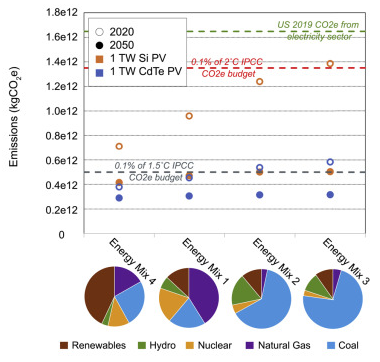1月のフンガ・トンガ・ハアパイの噴火は、観測科学的にもユニークで、地球上に反響する波が発生し、電離層まで100kmにも達した。 Hunga Tonga-Hunga Ha’apai eruption in January was unique in observed science, creating waves that reverberated around Earth, reaching 100km into the ionosphere.
2022-06-30 バース大学

Image courtesy of NOAA and the National Environmental Satellite, Data, and Information Service (NESDIS).
この研究は、広範な衛星データと地上での観測を組み合わせ、この噴火がその規模と速度、そして高速で動く重力波と大気波の発生範囲において、観測科学上ユニークであることを示したものである。
2021年12月に始まった一連の小規模な噴火に続いて、今年1月15日にフンガトンガは噴火し、地表から50km以上にわたって垂直な噴煙を上げた。噴煙の中の水と高温の火山灰から放出される熱は、その後12時間にわたって地球上の最大の重力波の発生源となりました。また、衛星観測によると、この噴火は波紋のような重力波を発生させ、太平洋盆地全体に広がっていることが分かりました。
この噴火によって引き起こされた大気中の波は、少なくとも6回地球を回り、理論上の最大速度に近い、これまで大気中で見られた中で最も速い、秒速320m(時速720マイル)の速度に達しました。一つの現象がこれほど広い領域を支配したことは、観測記録としては異例であり、将来の大気気象・気候モデルの改良に役立つと論文の著者は述べています。
<関連情報>
- https://www.bath.ac.uk/announcements/powerful-tonga-volcano-eruption-triggered-atmospheric-gravity-waves-reaching-the-edge-of-space/
- https://www.nature.com/articles/s41586-022-05012-5
フンガトンガ・ハアパイ噴火による地表から宇宙への大気波の観測 Surface-to-space atmospheric waves from Hunga Tonga-Hunga Ha’apai eruption
Corwin J. Wright,Neil P. Hindley,M. Joan Alexander,Mathew Barlow,Lars Hoffmann,Cathryn N. Mitchell,Fred Prata,Marie Bouillon,Justin Carstens,Cathy Clerbaux,Scott M. Osprey,Nick Powell,Cora E. Randall & Jia Yue
Nature Published:30 June 2022
DOI:https://doi.org/10.1038/s41586-022-05012-5
Abstract
The January 2022 Hunga Tonga–Hunga Haʻapai eruption was one of the most explosive volcanic events of the modern era1,2, producing a vertical plume which peaked > 50km above the Earth3. The initial explosion and subsequent plume triggered atmospheric waves which propagated around the world multiple times4. A global-scale wave response of this magnitude from a single source has not previously been observed. Here we show the details of this response, using a comprehensive set of satellite and ground-based observations to quantify it from surface to ionosphere. A broad spectrum of waves was triggered by the initial explosion, including Lamb waves5,6 propagating at phase speeds of 318.2±6 ms-1 at surface level and between 308±5 to 319±4 ms-1 in the stratosphere, and gravity waves7 propagating at 238±3 to 269±3 ms-1 in the stratosphere. Gravity waves at sub-ionospheric heights have not previously been observed propagating at this speed or over the whole Earth from a single source8,9. Latent heat release from the plume remained the most significant individual gravity wave source worldwide for >12 hours, producing circular wavefronts visible across the Pacific basin in satellite observations. A single source dominating such a large region is also unique in the observational record. The Hunga Tonga eruption represents a key natural experiment in how the atmosphere responds to a sudden point-source-driven state change, which will be of use for improving weather and climate models.



